How far can you accurately throw a knife?
The effective range is estimated to be up to 50 meters (160 feet) for maximum efficiency.
The art of knife throwing combines physical skill with a deep understanding of dynamics, allowing a knife to be accurately thrown at a target board. The distance to the target can vary, but with proper technique, knife throwers have set world records by throwing a knife over impressive distances. Holding the knife in a pinch grip and executing a precise throwing motion is crucial for ensuring the knife sticks into the target board. The standard distance for competitive throwing provides a benchmark for measuring skill and accuracy.
Understanding Knife-Throwing Dynamics
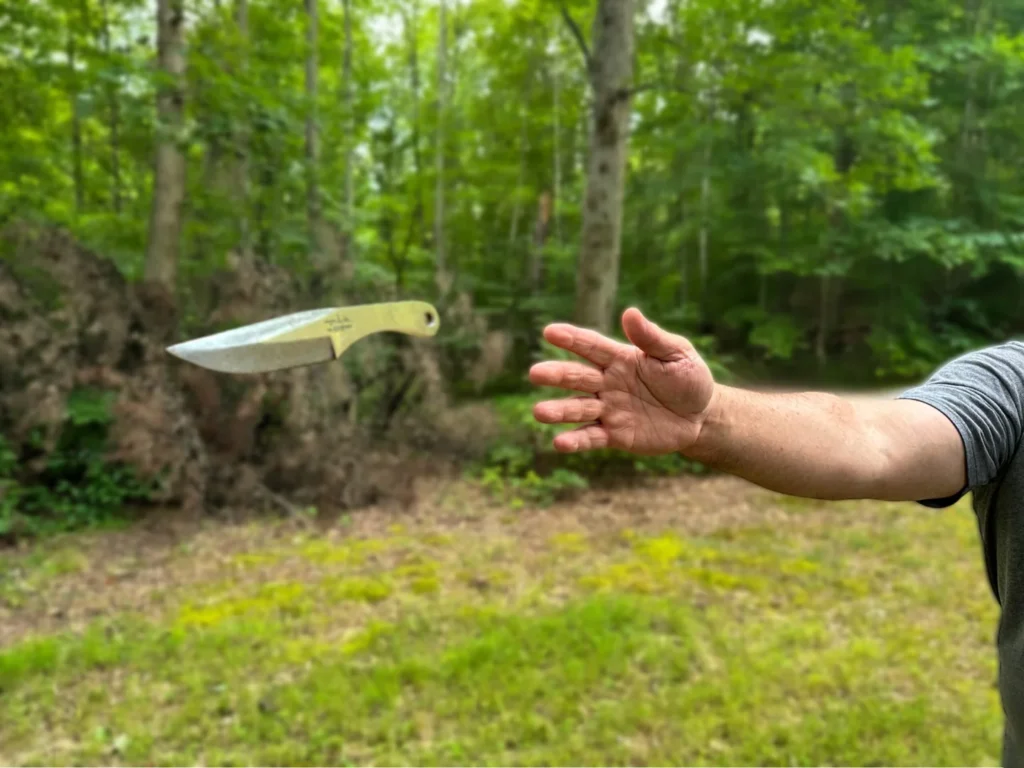
Knife throwing is more than just force; it’s about the harmony between the thrower and the knife. Understanding the physics behind how a knife rotates and travels through the air is essential for mastering this skill. Each throw combines speed, spin, and trajectory to achieve accuracy.
The Essentials of Knife Selection
Selecting the right knife is the first step towards becoming an adept knife thrower. The weight, length, and balance of the knife all play a significant role in its flight behavior and ability to stick to the target.
We recommend this popular throwing knife set from Amazon:
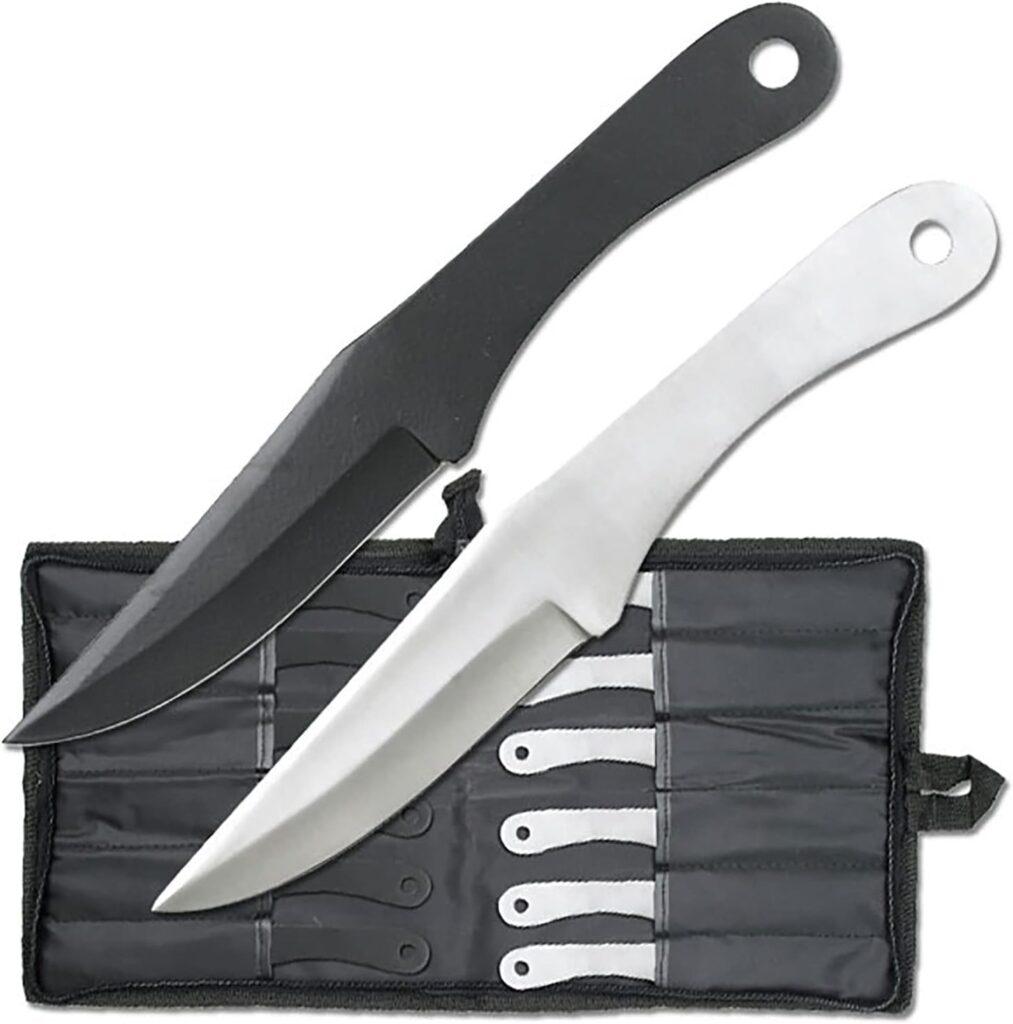
What Makes a Knife Suitable for Throwing?
A knife suitable for throwing must have a balanced design, a durable construction, and a weight that allows for controlled throws. These factors together determine the knife’s stability in flight and precision upon hitting the target.
Recommendations for Beginners: The Kershaw Ion
For those new to this skill, the Kershaw Ion is an excellent starting point. Its design caters to the needs of beginner knife throwers, offering a balance between ease of use and performance that helps in learning the basics of knife throwing.
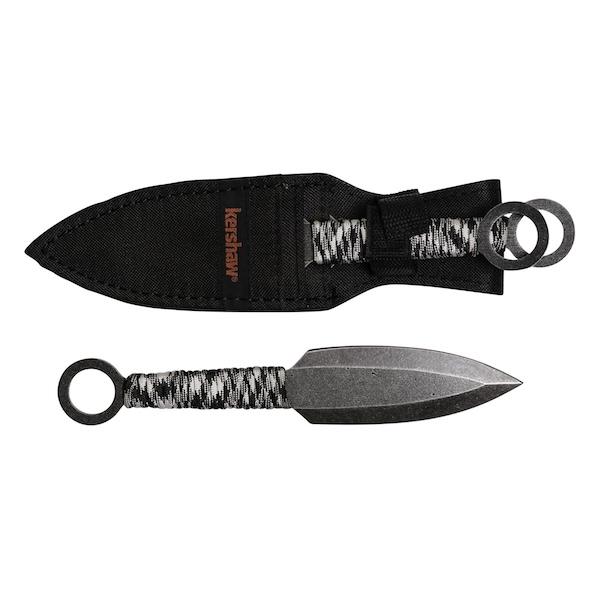
Advanced Techniques in Knife Throwing
As throwers progress, they explore advanced techniques to increase their precision and distance. Mastering these techniques involves a deeper understanding of knife dynamics and throwing mechanics.
Mastering the Half-Spin, Full-Spin, and No-Spin
Advanced throwers adjust the distance to the target and use their index finger to control the spin. These techniques, including the half-spin, full-spin, and no-spin, require precise control over the knife’s rotation.
The Techniques Behind the Throw
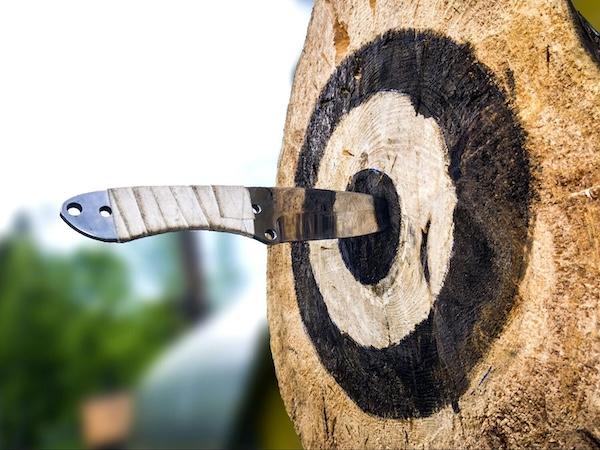
Mastering knife throwing is akin to riding a bike, where muscle memory plays a crucial role. The spin of the knife, along with the choice between a blade grip and a handle grip, affects the trajectory and accuracy of the throw.
The Importance of Grip, Posture, and Form
Developing a consistent throwing technique starts with the basics: a proper grip and a relaxed body posture. Muscle memory allows throwers to replicate successful throws, while a relaxed body ensures fluid motion.
The Three Essential Grips Explained
The hammer grip, along with the correct positioning of the tip of the knife, is foundational for beginners. Learning how to grip the knife correctly is crucial for achieving the desired spin and trajectory.
Practicing Your Throw: Distance and Accuracy
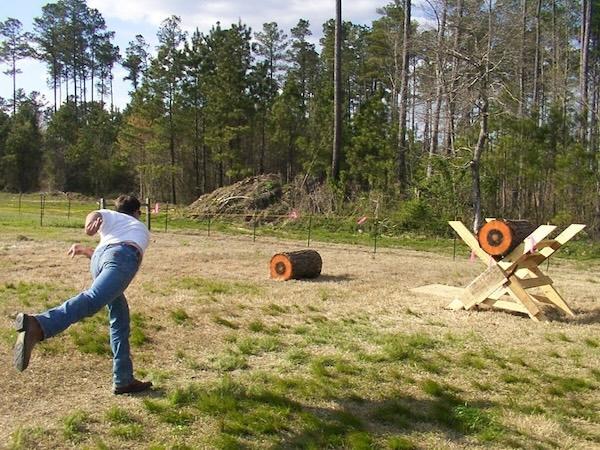
Like riding a bike, consistency in knife throwing comes from practice. The spin of the knife, along with the correct blade grip or handle grip, and ensuring the handle is pointing and the blade facing the right direction, is vital for accuracy.
Determining the Ideal Knife Throwing Distance
For advanced throws, finding the standard distance that meets the goals of knife throwing is crucial. This distance is where most throwers find their throws are most accurate and consistent.
Strategies for Improving Accuracy Over Distance
Improving accuracy over distance involves consistent practice, refining your grip and throwing technique, and understanding the dynamics of your throws. Adjusting your stance and throw according to the distance can also enhance precision.
Setting Up Your Practice Environment
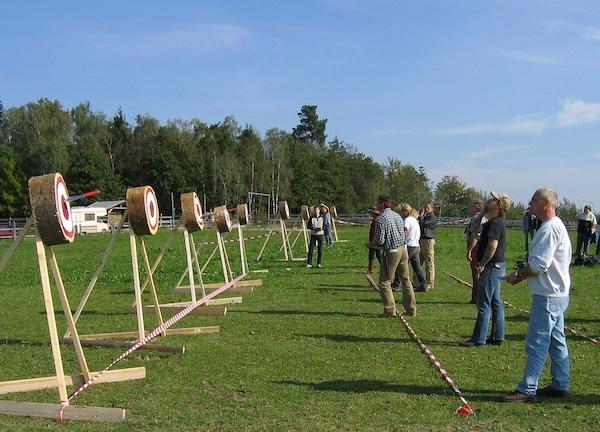
To excel in knife throwing, one must not only focus on technique but also on creating a conducive practice environment. This involves adhering to rules that ensure both safety and effectiveness. The right setup helps throwers refine their skills under conditions that mimic actual scenarios they might face, whether in competition or as a hobby.
Choosing Your Target
Knife throwers often seek targets that offer both safety and the ability to measure precision. Advanced knife enthusiasts recommend using softwood as a target material because it allows the knife to stick easily without causing too much damage to the blade. This balance is crucial for both beginners and experienced throwers to hone their skills effectively.
Materials and Setup for an Ideal Practice Target

For those looking to set up an ideal practice target, advanced knife throwers suggest softwood as the go-to material. Its forgiving nature allows the knife to penetrate without too much resistance, providing immediate feedback on the throw’s accuracy and force. Proper setup includes ensuring the target is securely mounted and at a height that mimics real-life scenarios.
Where to Practice Knife Throwing
Choosing where to throw knives is as important as how you throw them. The rules of safety are paramount, dictating that a clear area, free of unintended targets, is selected. Whether it’s a backyard or a specialized facility, ensuring the space meets safety standards is crucial for effective practice.
From Backyard to Competition: Finding the Right Spot
Finding the right spot for knife throwing involves considering the distance from the target. A backyard may serve well for beginners, but as one’s skills advance, seeking spaces that allow for longer throws becomes necessary. This progression from backyard to competition spaces helps throwers adjust to varying distances and conditions.
Practicing For Competitions: Tips and Tricks
For those aiming to compete, practicing at a regulation distance from the target is key. This helps in adapting to the standard distances used in competitions, allowing throwers to gauge their throws accurately and adjust their technique as needed. Consistent practice at these distances can significantly improve performance in competitive settings.
Nurturing Your Skills: Practice Makes Perfect
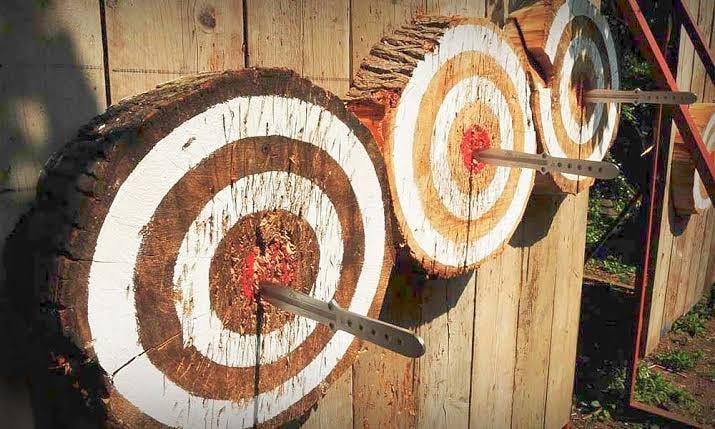
Developing proficiency in knife throwing requires consistent practice. By dedicating time regularly to refine techniques and address weaknesses, throwers can see substantial improvement. This commitment to regular practice is crucial for advancing from beginner to expert levels.
Creating a Routine for Regular Practice
Establishing a routine for regular practice is essential for progress in knife throwing. A structured schedule helps in building muscle memory and improving accuracy over time. It also allows throwers to systematically work on different aspects of their technique, from grip to release.
Tracking Progress and Setting Goals
Setting goals and tracking progress are important steps in the journey of a knife thrower. By measuring improvements and setting new challenges, throwers can stay motivated and focused. This process of continual evaluation and goal-setting helps in identifying areas for improvement and celebrating achievements along the way.
The Journey from Novice to Expert
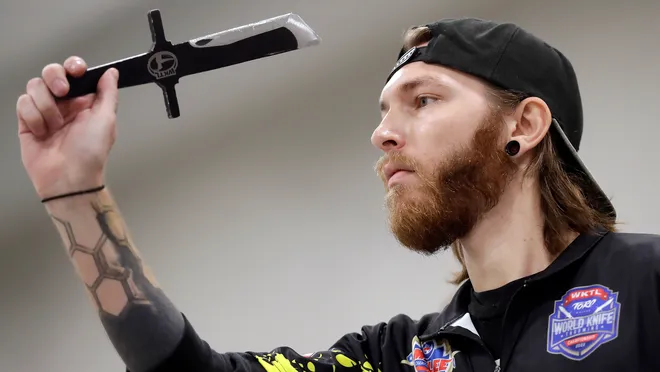
Transitioning from a novice to an expert in knife throwing involves a deep understanding of the craft, from the basics of grip and stance to the complexities of distance and accuracy. This journey is marked by continuous learning, practice, and adaptation, as throwers refine their skills and tackle new challenges.
The Evolution of Your Knife-Throwing Technique
The evolution of a knife thrower’s technique is a testament to their dedication and practice. Over time, throwers learn to adjust their grip, posture, and throw to increase accuracy and consistency. This refinement process is crucial for those looking to master the art of knife throwing.
Achieving Mastery: How Far Can You Go?
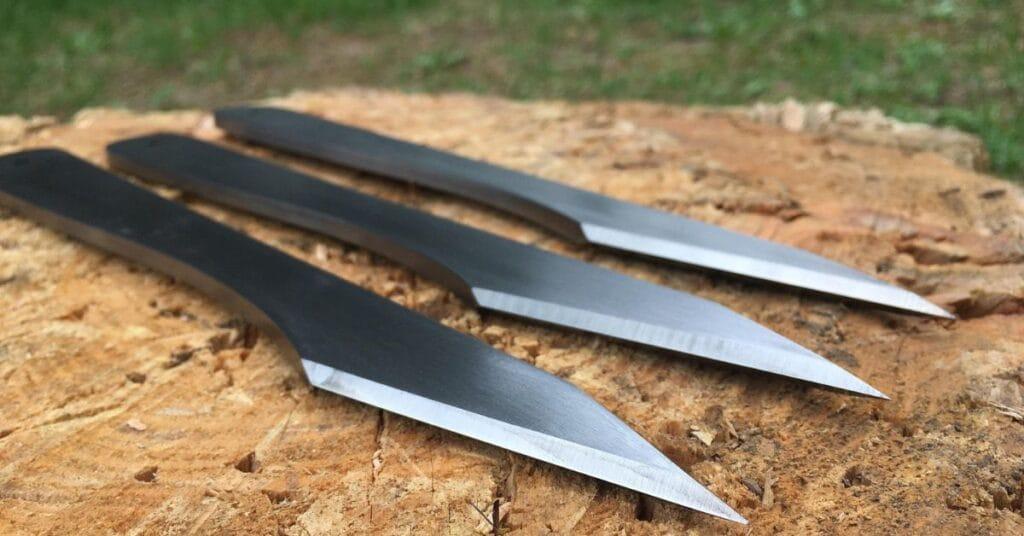
Achieving mastery in knife throwing is not just about how far one can throw a knife but also about precision and consistency at various distances. The distance to the target, the way the knife sticks, and the ability to throw a knife with precision, even when using a pinch grip, are all indicators of a thrower’s proficiency. Records, such as the world record for knife-throwing distance, offer benchmarks for what is possible, pushing the boundaries of the sport.
The Limitations and Potential of Knife Throwing
While practice throwing knives can lead to significant improvements, there are limitations to consider, such as the type of knife used. Not all knives, like a kitchen knife or a hunting knife, are suitable for throwing. Balanced knives, specifically designed for throwing and featuring a dull edge, enhance safety and performance. Moreover, the choice of target wood and the consistency of throws are critical for achieving an accurate throw. Avoiding fancy grips and opting for lighter, balanced knives can help mitigate inconsistent throwing, showcasing the blend of art and science in knife throwing.
We recommend this popular throwing knife set from Amazon:


